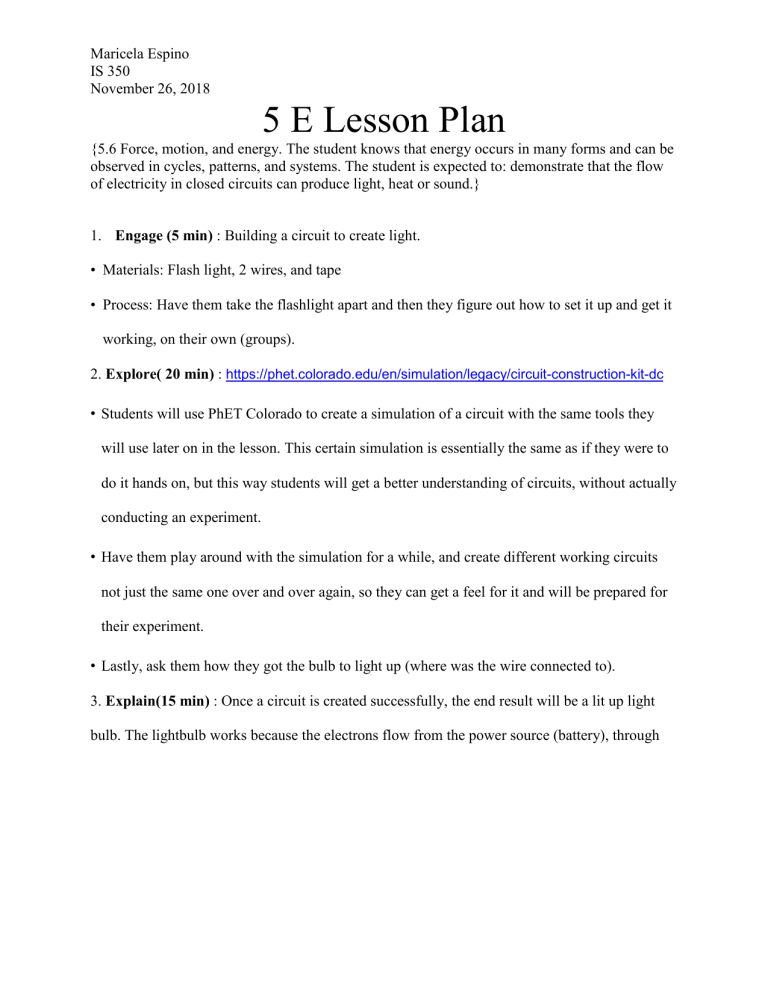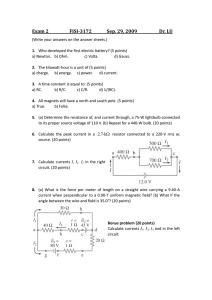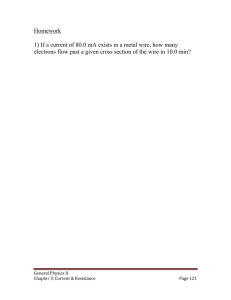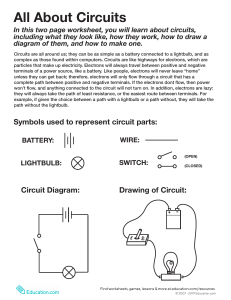
Maricela Espino
IS 350
November 26, 2018
5 E Lesson Plan
{5.6 Force, motion, and energy. The student knows that energy occurs in many forms and can be
observed in cycles, patterns, and systems. The student is expected to: demonstrate that the flow
of electricity in closed circuits can produce light, heat or sound.}
1. Engage (5 min) : Building a circuit to create light.
• Materials: Flash light, 2 wires, and tape
• Process: Have them take the flashlight apart and then they figure out how to set it up and get it
working, on their own (groups).
2. Explore( 20 min) : https://phet.colorado.edu/en/simulation/legacy/circuit-construction-kit-dc
• Students will use PhET Colorado to create a simulation of a circuit with the same tools they
will use later on in the lesson. This certain simulation is essentially the same as if they were to
do it hands on, but this way students will get a better understanding of circuits, without actually
conducting an experiment.
• Have them play around with the simulation for a while, and create different working circuits
not just the same one over and over again, so they can get a feel for it and will be prepared for
their experiment.
• Lastly, ask them how they got the bulb to light up (where was the wire connected to).
3. Explain(15 min) : Once a circuit is created successfully, the end result will be a lit up light
bulb. The lightbulb works because the electrons flow from the power source (battery), through
Maricela Espino
IS 350
November 26, 2018
the wire, to the lightbulb, and then through the next wire back into the battery, and this keeps going on and on. If there was to be an opening in the circuit, that would cause the flow of energy to
stop and therefore the light would no longer be lit up.
4. Elaborate: Students will put their new found knowledge to use and see if they can build an
actual circuit. They will record in their notebooks each circuit that works and each that doesn’t.
Once they successfully get the lightbulb to light up, have them raise their hand so the teacher can
check their work and make sure it is correct. Once they are done, have them write their observations in their notebooks, and write a conclusion.
5. Evaluate(5-20 min): What makes the light bulb able to turn on? Use essential vocabulary.
Maricela Espino
IS 350
November 26, 2018
Exemplar: The circuit functions because there is a power source (battery), something for the
electrons to travel through (wire), and a light source (lightbulb). When you connect the wire to
the battery, the lightbulb on the other end of the battery, and then the wire to the light bulb, there
is now somewhere for the flow of electricity to flow through to the lightbulb, the electrons then
travel through the wire and back to the lightbulb. Since it is a closed circuit, the electrons just
keep traveling on the same path, and therefore the light will stay on until there is an opening in
the circuit.
0
10
20
25
Theory
Demonstrates Shows minimal Understands
no
understanding theory very
understanding of theory.
well.
of the theory.
Data
Provides no
data.
Provides
Provides some Provides plenty
minimal
data.
of data to back
amount of data.
up his/her
claims.
Vocabulary
Does no use
proper
vocabulary.
Uses one or
Uses most
two vocabulary vocabulary, but
words.
doesn't show
full
understanding
of some words.
Spelling/Gram Too many
mar
errors
Quite a few
spelling and
punctuation
mistakes.
Demonstatrate
s perfect
understanding
of theory and
goes above
and beyond to
show it.
Uses all
vocabulary
words and
shows clear
understanding
of them.
Minimal
No mistakes.
spelling/gramm
ar errors made.
Maricela Espino
IS 350
November 26, 2018
0
Fluidity/Comm Writing does
unication
not flow at all;
does not make
sense.
10
20
There is room Writing flows
for
well, could use
improvement. some work
Writing not very
clear.
25
Writing is clear
and precise.
Communicates
perfectly.







